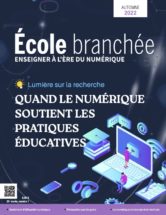
Mobiliser le numérique en contexte de formation initiale au-delà de l’oiseau bleu
Un engagement élevé de la part des étudiants et étudiantes dans leur formation est une condition essentielle au développement de leurs compétences. C’est avec cette prémisse en tête que trois projets mobilisant différentes dimensions du Cadre de référence de la compétence numérique (MEES, 2019) ont été proposés aux étudiants du cours Développement physique et santé à l’hiver 2022, dans le cadre du baccalauréat en intervention sportive et du baccalauréat en enseignement de l’éducation physique et à la santé à l’Université Laval.









